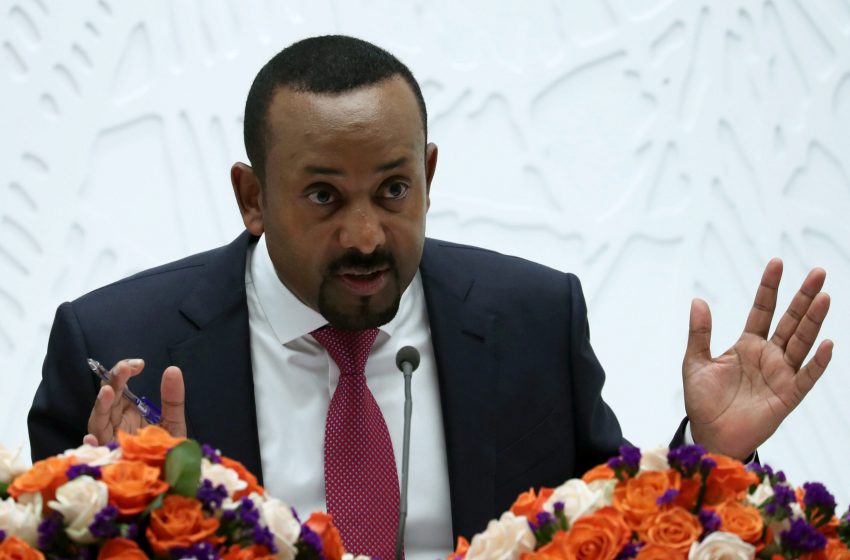
Ethiopia: Salvaging a failing state
Prime Minister Abiy Ahmed has lost the war; the time has come for a ceasefire to negotiate the country’s future.
Source: Responsible Statecraft
November 10, 2021
“Our overriding interest in the Horn of Africa is stability.” These were the words of Jeffrey Feltman, U.S. Special Envoy to the region, speaking at the United States Institute of Peace on November 2. At the end of the session, he summed up the challenge he faced for his upcoming mission to Ethiopia to seek a negotiated end to the war, now a year old, between the Federal Government headed by Prime Minister Abiy Ahmed and the government of the Tigray region headed by the Tigray People’s Liberation Front, or TPLF. “The prime minister, I believe, thinks that the TPLF wants to replace him,” Feltman said. “The TPLF thinks that the prime minister wants to, probably, exterminate them.” He immediately added — more in hope than conviction — “I don’t think either is true.”
The first task in halting Ethiopia’s slide into further calamity is finding a formula whereby Abiy and the Tigrayans can agree on a ceasefire, humanitarian access to the starving, an end to hate speech, and talking to one another. The government in Addis Ababa, however, insists that the TPLF is a “terrorist” organization, and Abiy’s spokesperson, Billene Seyoum, asserted last week that she wasn’t “entirely sure there are successful examples of any country talking with terrorists and coming out in an amicable way.” Of the several examples Feltman could have chosen to prove the contrary — Namibia, South Africa, Northern Ireland — he chose to speak about the peace process in Colombia.
The Tigrayan leadership laid out their preconditions for talking in July, including withdrawal of non-Tigrayan forces from their lands, lifting the humanitarian siege, and respecting the existing federal constitution. Tigrayans are unimpressed with an international response that ignored the total war fought against them for the first half of the year, followed by howls of alarm when the fighting now threatens Addis Ababa.
The Ethiopian capital has long been a bubble, in which famines and fighting in the provinces are disregarded until the residents feel the hunger and hear the gunfire. That bubble burst last week, and embassies are hurrying to evacuate their staffs. Government officials are sending their families abroad. Every flight out of Addis Ababa is overbooked.
The brute reality: the Tigray Defense Force has comprehensively defeated the Ethiopian National Defense Force. Abiy has lost the war. One of Africa’s most professional and powerful militaries has been reduced to an assemblage of conscripts, militia, and remnants of his soldiery that resembles a fighting force but is disorganized and demoralized — and no match for the TDF.
The world’s biggest conventional battles today have gone unreported. The Ethiopian army lost ten of its twenty divisions in Tigray in May and June, with at least 10,000 dead and a similar number taken prisoner. The hastily reconstituted and expanded army was defeated on an even larger scale in battles for the Amhara cities of Dessie and Kombolcha last month.
The victor is the TDF, a force that didn’t exist a year ago. In the face of an onslaught that appeared determined to crush their bodies and spirits through massacre, rape, and starvation, the Tigrayans set aside their internal differences and united in resistance.
The TDF contains both supporters and critics of the TPLF. They began with a guerrilla fight, carrying light weapons and hiding in the mountains. They scaled up and drove the ENDF and their Eritrean allies out of Tigray in June. Armed with captured weapons, the TDF took the offensive to break the starvation siege that Abiy had imposed on them.
Today, on the back of the TDF victories, the TPLF leaders — the men who led Tigray into the war and who bear much responsibility for it — are reasserting themselves. But they have no coherent political plan. Last week the TPLF joined with the Oromo Liberation Army and seven other smaller groups to form the United Front of Ethiopian Federalist and Confederalist Forces. Both the process and the content of the deal were opaque. For ordinary Tigrayans and other Ethiopians alike, it appeared that the TPLF was making a bid for power behind the pretense of a broad coalition. There is a flurry of concern about whether this all portends mayhem, state collapse, and instability across the region.
Such fears are warranted. Most Ethiopians fear the TPLF, which was the dominant power in the country from 1991 to 2018, and do not want it back in power. Meanwhile, Abiy has escalated his incitement to violence, to the extent that Facebook removed one post in which he called upon Ethiopians to “bury” them, and Twitter has disabled its “trends” section for Ethiopia. There are mass roundups of Tigrayans in Addis Ababa amid a general call to arms. But the reality of the military defeat, and the scale of the slaughter at the front line — tens of thousands of young people dead in October alone — is no longer a secret.
The Ethiopian democracy movement, which brought Abiy to power in 2018 only to see its leaders be jailed and barred from competing in elections, is stirring. From his prison cell, the head of the Oromo Federalist Congress, Jawar Mohammed, is reaching out to see whether there is a civic coalition that could fill the vacuum.
There are some encouraging signs that Abiy is at last recognizing his predicament, and the international community is gearing up an effort to end the war.
Feltman’s public flattery of Abiy at USIP had the desired result of getting the Ethiopian prime minister to open his door for a face-to-face meeting, which is a step forward. Kenyan President Uhuru Kenyatta has joined the United States as a partner in pressing for negotiations. Their mediation is entirely discreet — which is reason for confidence.
The African Union chairperson’s special envoy, former Nigerian president Olusegun Obasanjo, is operating in the glare of publicity. On Sunday, he traveled to the Tigrayan city of Mekelle for his first meeting with the TPLF. Although the Tigrayans have harshly criticized Obasanjo for his overt sympathies for Abiy, they received him cordially. On Obasanjo’s return to Addis Ababa — which is also the African Union’s headquarters — the new AU Peace and Security Council convened its first meeting on the conflict since it was launched one year ago. The PSC called for a ceasefire, an end to hate speech, and humanitarian access to the starving. It appealed to the international community (read: the United States and Europe) not to impose sanctions, failed to call for a release of political prisoners, and reiterated its opposition to an unconstitutional change of government — ruling out the opposition plan for a transitional government.
The AU is toothless, but China, Russia, and India often follow its lead on African issues, and, at the U.N. Security Council Monday, their tone had changed. They were sober. They knew the reality, that the AU was laying out a roadmap to salvage Abiy.
Their problem is that Abiy cannot be salvaged by diplomatic resolutions such as this. In the short term, the best-case scenario is that both sides quickly agree to cease hostilities and the Ethiopian government lifts its siege of Tigray, stops beating the war drums, and releases thousands of detainees. This may feed the starving in Tigray and prevent a pogrom and intercommunal violence in Addis Ababa — all of which are necessary.
But it won’t stop state collapse because the state has already failed. Following the historian Charles Tilly’s precept that “war makes the state while the state makes war,” the Ethiopian army’s structure reveals the nature of the state. Abiy ran a martial state, committed to imposing his vision — an Ethiopia restored to its imperial glory — by force of arms. While many of his supporters hoped for a civic republicanism, what they got was a vision of an empire reborn. That ambition was the underlying cause of Abiy’s fall-out with the Oromo movement and the war with Tigray. Dreaming of empire, Abiy squandered the state institutions he had. The ENDF today is an assemblage of quarrelsome ethnic units, mobilized by hate speech with some high-tech toys such as drones. It shows what Ethiopia has become. Academic historians tell us that this may not be so different from the brute realities of Ethiopia’s imperial past.
Ethiopia’s future will be determined in the ceasefire negotiations. A permanent ceasefire is far more complicated than simply stopping shooting. As the Tigrayan academic Mulugeta Berhe explains, a ceasefire will require precise and unambiguous language on where forces should be located; what actions should be prohibited (which the Tigrayans will want to extend to arms purchases); which forces should be covered (i.e. ethnic militias); who should provide monitoring and verification; and — most importantly — the final status of the belligerents’ armed forces. That last point is crucial, because, having undergone a potentially genocidal assault, the Tigrayans will not entrust their security to anyone else. They will seek permanent security on their own terms — they won’t disarm or allow a central army that could overpower them at some future date.
The unavoidable implication is that the ceasefire terms will determine the future shape of the Ethiopian federation — or, possibly, confederation.
When the AU and U.N. make their routine calls for respecting Ethiopia’s unity and sovereignty, what they have in mind is restoring a strong central government and reducing the Tigrayans to provincial rebels to be paid off with a slice of the pie. But this risks cornering the Tigrayans. They will refuse to withdraw or disarm and could lose confidence in the mediation — which would make the crisis intractable.
The key to unlocking this is understanding how sovereignty is defined in the Ethiopian constitution. The country has a unique ethno-federal system that envisages Ethiopia as a coming together of different groups. The constitution’s preamble begins, “We the Nations, Nationalities and People of Ethiopia: Strongly committed, in full and free exercise of our right to self-determination, to building a political community.” Article 8 reads: “All sovereign power resides in the Nations, Nationalities and Peoples of Ethiopia.” Abiy wanted to go back to a unitary system of government, but he lost the war before he could revise the constitution so it is still in force. The Tigrayans and Oromos are determined to keep it.
Feltman and Kenyatta have a delicate task. Abiy and the Tigrayans are well aware that the terms of a ceasefire and the definition of “sovereignty” will set the future course of the country. The mediators must move fast to avoid another bloodbath, but defining the framework for a settlement will be time well spent.
